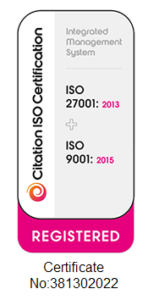Live, Virtual or Hybrid: Is There an Optimal Mix?
“The straight line; a respectable optical illusion, but one that ruins many a man.” – Victor Hugo
As we start to think about what ‘normal’ will look like, more and more people are assessing whether to dip their toes in the world of hybrid meetings.
We’re starting to get more enquiries from organisers of medical education events and healthcare conferences about doing hybrid events, as the industry looks to once again connect with healthcare professionals in person where possible.
But there is a complete lack of definition around what ‘hybrid’ is, and while it existed before Covid, it’s suddenly become a trendy term with organisations trying to sell businesses the promise of hybrid events.
However, Open Audience actually has the experience and expertise to plan and deliver fully virtual, hybrid and physical events.
For example, I was recently approached by a medical society to support a hybrid meeting from a meeting room in a medical institution. To determine whether they understood what that would entail, I put a series of questions to them.
“Will all the speakers be there?”
“No, we’ll still have speakers attending virtually.”
“And are they speaking as a group or are they speaking sequentially?”
“No, they just do one lecture, finish, and leave.”
“Will people come to the venue?”
“We’re not sure if we’ll get an audience, but perhaps some local people.”
“So, how do you think that’s going to work? Do you know it will cost much more than just running a virtual event because you’re double dipping on effort? How will you introduce people? And are the technology team on site, are they virtual, or should we plan for some remote-control cameras?”
Once we work through these questions, organisations often rethink and decide that the benefits of a hybrid event don’t fully outweigh the effort involved, and they revert to virtual events until it’s safe to meet in person again.
In another recent example, we have been having conversations with an organisation in Canada about hosting a 400-person conference. Given the in-person restrictions (maximum of 50 delegates) and the risks, we reviewed whether it would work to have eight rooms with 50 people in each room within a large conference centre, with a stage in one room and the sessions beamed to each room.
It quickly became apparent that this was neither practical nor allowed within the local regulations. This again pushed us back to a virtual model for this year.
Determining meeting safety
The desire to meet in person again is understandable, particularly for organisations that are worried about when, how and even if they will get back to face-to-face engagements with healthcare professionals. Networking, content delivery and different delivery options are key drivers as to why companies are considering meetings that allow a mix of live and virtual.
But the question is, how do you safely bring people together? How are you going to socially distance, limit numbers and still have a successful physical meeting? And if numbers are limited and speakers won’t be staying around for discussions, or not all speakers choose to travel there, what is the true value to those attending?
Once you start to understand plans and intent and explore the risks, it becomes clear that confidence in physical meetings is limited and there are different drivers from all locations and service providers to return to onsite events.
All stakeholders yearn for the return to normality and face to face interactions.
The question about what is the right mix between physical, virtual and hybrid might be better framed as: what are the risks and benefits of hybrid? Do they make sense? Are they worth the extra effort and complexity of delivery? And will they really help you to achieve your objectives in terms of reaching and engaging a wider audience?
Leslie Robertson is the Founder of Open Audience, an audience engagement consultancy that specialises in making life sciences meetings more engaging with more positive, successful outcomes – whether in-person or in the virtual space. The Open Audience team helps to strategise and prepare pre- and post-meeting as well as providing real-time support and guidance during the meeting. Open Audience also offers customisable, multilingual engagement platforms that include interactive polling, surveys, and ideas exchange.

